The Tamagotchi Will Outlive Us All
How a pixelated egg cracked the code to eternal fashion relevance
Written in partnership with Fashion Tingz.
There’s a certain breed of object that haunts us. Not with horror, but with persistence. The beeping smoke alarm. The buzzy feedback from some old wired earphones. And then there’s Tamagotchi: the clingy digital pet that would collapse in a moment's lapse. Yet its esoteric charm, in all senses of the word, would keep us coming back.
At first glance, it’s just a plastic egg with a screen. But peer closer, and it’s a cultural oracle. Blinking, beeping, and teaching generations that love can be both adorable and wildly inconvenient.
Launched in 1996 by Bandai and born from the mind of Akihiro Yokoi, he found inspiration in a commercial involving a boy who couldn’t bring his pet turtle on vacation. This sparked an idea: what if you could carry a pet with you anywhere you go?
The challenge was to make it fun, portable, and — most critically — affordable. At the time, handheld gaming was dominated by the Game Boy, which was expensive. Yokoi envisioned something much cheaper that still offered interactivity at a fraction of the price. (Interestingly enough in a twisted tale of fate, Tamagotchi would later become a game on the Game Boy.)
Tamagotchi is derived from the Japanese words tamago (egg) and uotchi (watch), and was originally designed to be worn on the wrist. It was later reimagined as the keychain format we now know and recognise, and the device exploded into global pop culture almost instantly. Within a year, over 13 million units had been sold.
More than just a toy, owning a Tamagotchi became a rite of passage. Part digital companion, part emotional landmine, every beep demanded your attention. Every poop symbol reminded you of your failings. And yet, it was clipped proudly to belt loops across the globe.
And on today’s fashion scene? It’s the poster pet of the Y2K aesthetic revival.
The Hypebeastification of Tamagotchi
Once a mall-rack staple and playground currency, Tamagotchi has ascended to a new realm: limited-edition, logo-splashed, drop culture darling. Streetwear’s hunger for nostalgia has given Tamagotchi an entirely new lease of life, one secured by clout and curated currency.
Supreme gave it the streetwear crucifixion treatment: three Tamagotchis, three camo patterns, each branded with the box logo and released as part of its SS23 accessories line. This wasn’t just merch, it was a resurrection, engineered for resale and built for grid-fodder. The once-humble egg was now a grail.
BAPE followed up with an all-out pixel parade. Their collaboration swathed Tamagotchis in electric camo prints, matched them with branded lanyards, and dropped accompanying apparel with lenticular graphics which made the design shift as you move, like some kind of post-digital lentil soup for the soul. It was loud, maximalist, and undeniably Y2K.
Even BTS — the global pop-industrial complex masquerading as a boy band — joined the fray with custom Tamagotchi collabs that bridged K-pop and kawaii. These weren’t just co-branded novelties. They were pieces of a fandom economy where the accessory becomes the avatar.
But what makes Tamagotchi the ideal canvas for collaborations? It’s the rare cultural object that hits every quadrant. Retro, but relevant. Cute, but uncanny. Tangible, but tech-y. The device comes with built-in storytelling — a lifecycle, a personality, a death — all in 32x30 pixels. In a fashion landscape obsessed with narrative, Tamagotchi is the rare accessory that tells one by default.
Tamagotchi as A Muse
Beyond fashion collabs, Tamagotchi has become an artistic medium.
Enter Takashi Murakami, the crown prince of kawaii-meets-contemporary. In 2022, he unveiled a Tamagotchi-style handheld digital pet draped in his signature flower iconography. It wasn’t a simple skin job. It was Murakami importing the logic of the Tamagotchi into the language of contemporary art and collectable culture.
The result? A hybrid novelty: part console, part shrine, part toy from a lost utopia.
But the remixing doesn’t stop with the blue-chip class.
On the DIY side of the spectrum, Tamagotchi has become a blank canvas for fan-driven customisation with Tamagotchi mirrors popping up all over shopping platforms Etsy, complete with glimmering pearls and a screen that reflects not your pet, but yourself.
And the Tamagotchi as a tool for self-worship doesn’t end there. A$AP Rocky was seen performing at Lollapalooza with a custom Tamagotchi necklace by a DIY designer named Monogotchi. Coi Leray has even been seen creating entire outfits out of wearable Tamagotchi’s, cementing their place in high fashion relevancy.
The Future is Tiny, Blinking, and Demands to Be Fed
Tamagotchi sits comfortably at the intersection of tech, toy, and taste.
Its symbolism is instantly recognisable, its scale is perfectly portable, and its emotional charge — somewhere between cuteness and existential dread — makes it the perfect fashion accessory for our times.
Which brings us to bag charms. Once an afterthought, these tiny trinkets have become status symbols in their own right. Tamagotchi fits here not as a novelty, but as a pioneer. A charm before the charm boom.
 Tiktok failed to load.
Tiktok failed to load.Enable 3rd party cookies or use another browser
And then, of course, there’s Coperni. It wasn’t enough for Tamagotchi to be a bag charm; it needed to become the bag itself. Known for their tech-tinged provocation, they fused a working Tamagotchi into their SS24 Swipe Bag. It has become a signal of fashion’s next obsession: anti-tech tech.
In the world of useless wearable tech — think Louis Vuitton’s fake iPod purse — the Tamagotchi reigns supreme. Because it does something. It feels.
Tamagotchi has outlasted trends, formats, and probably your childhood best friend’s hamster. It’s not just nostalgia…it’s fashion, sculpture, meme, mirror. It’s an object lesson in how design, culture, and cuteness can converge into something mythic yet tangible.


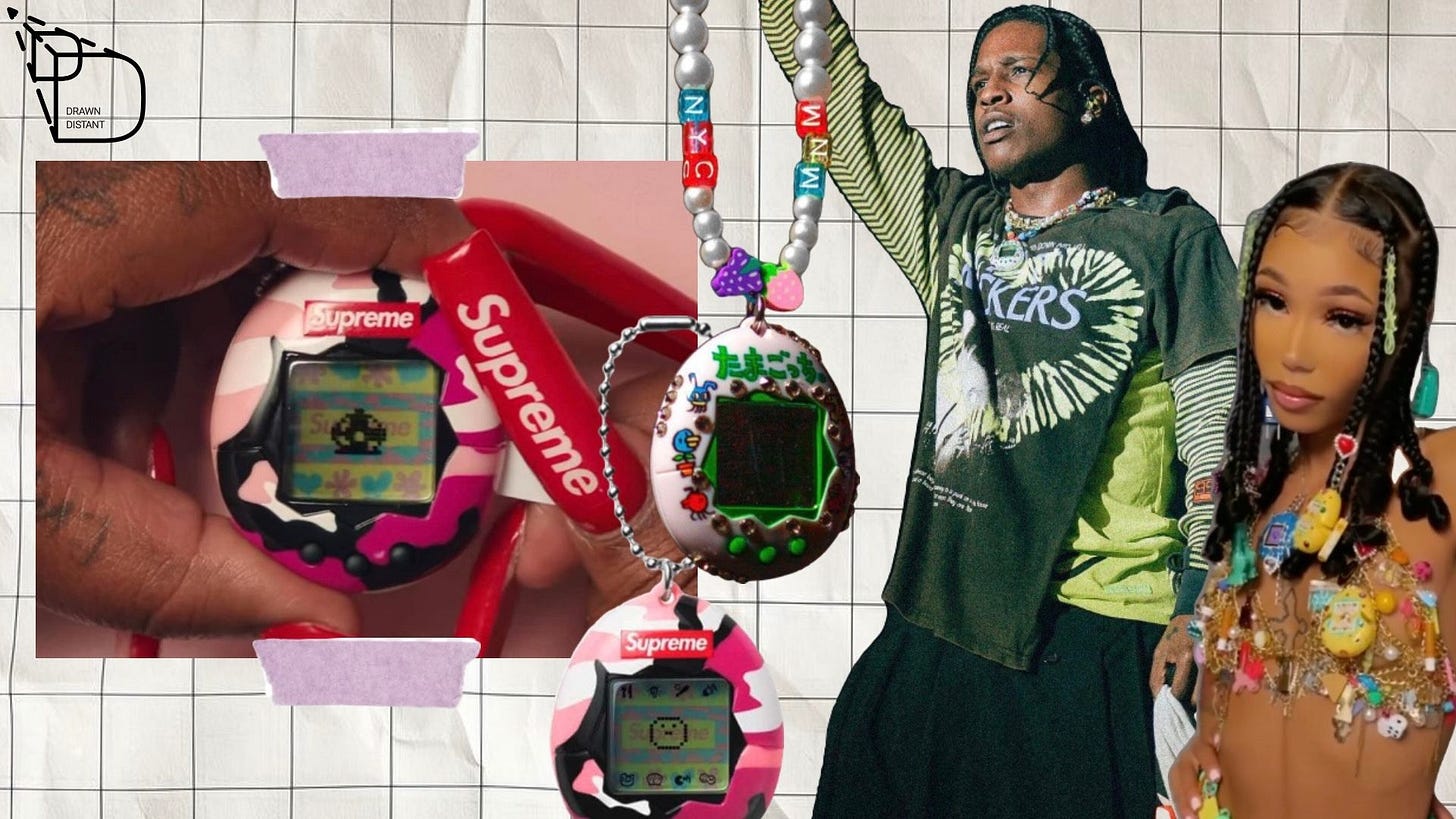
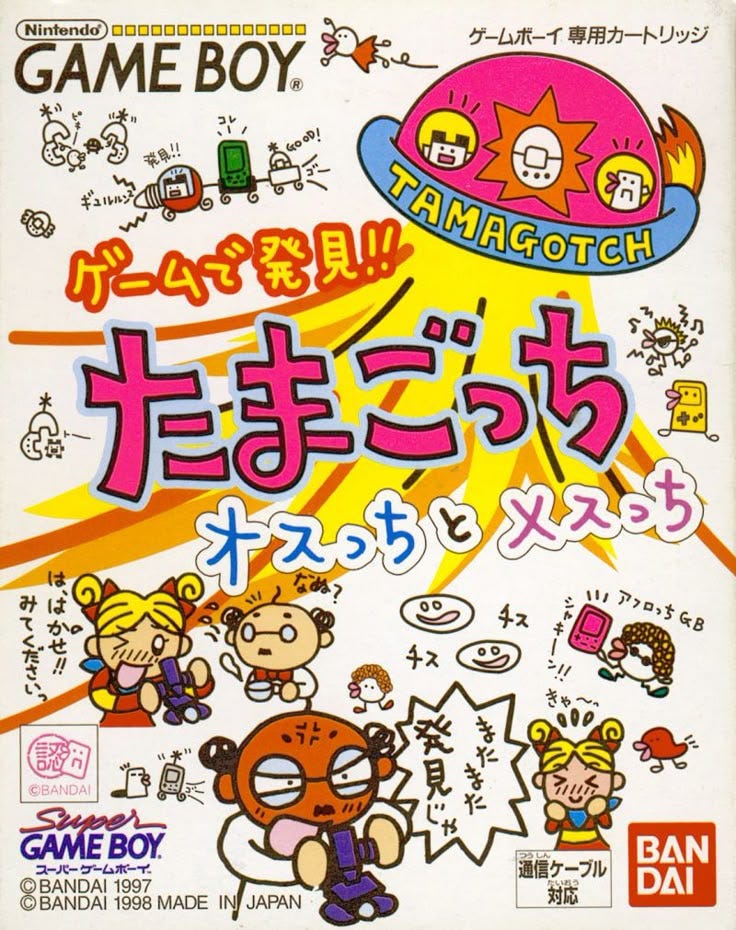
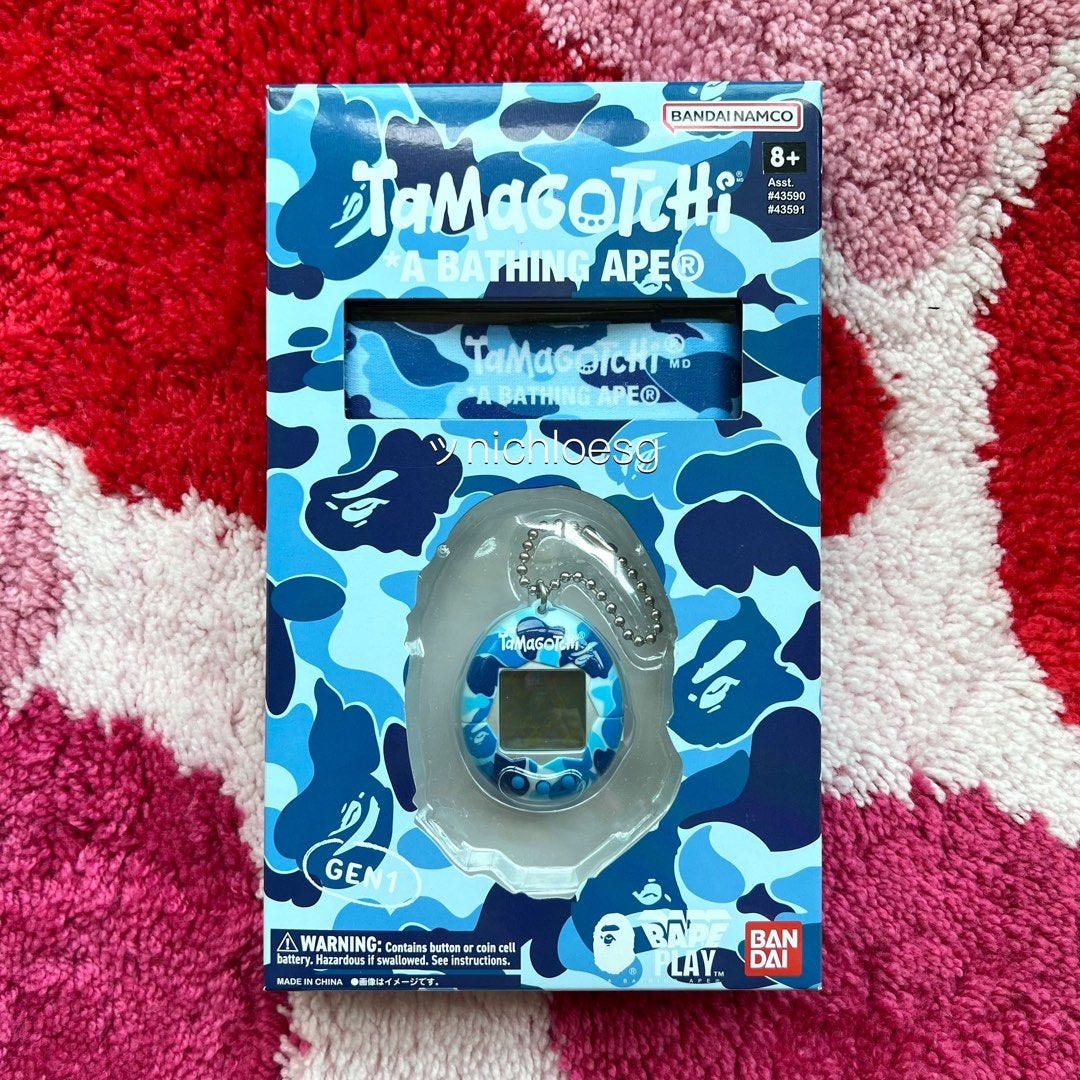
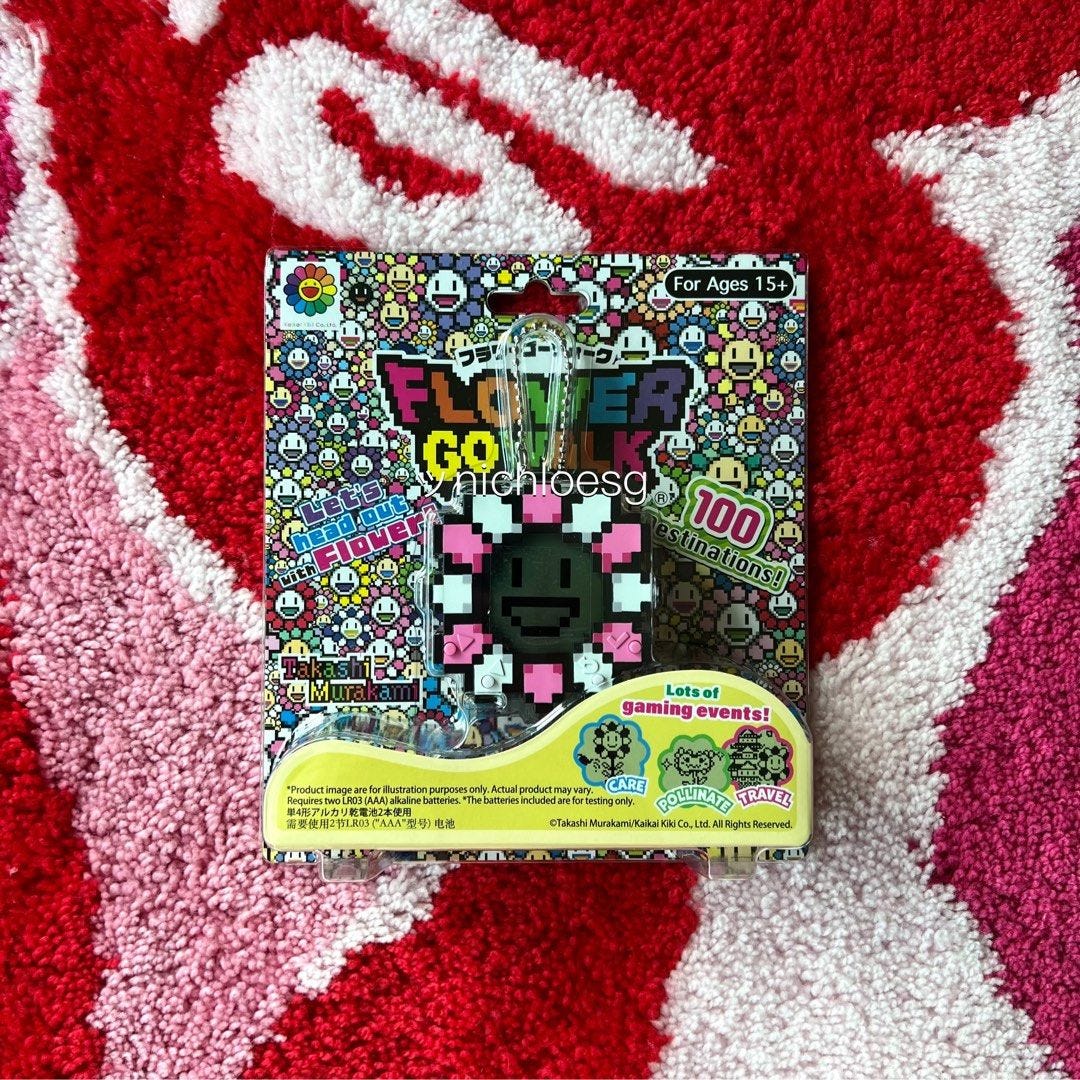
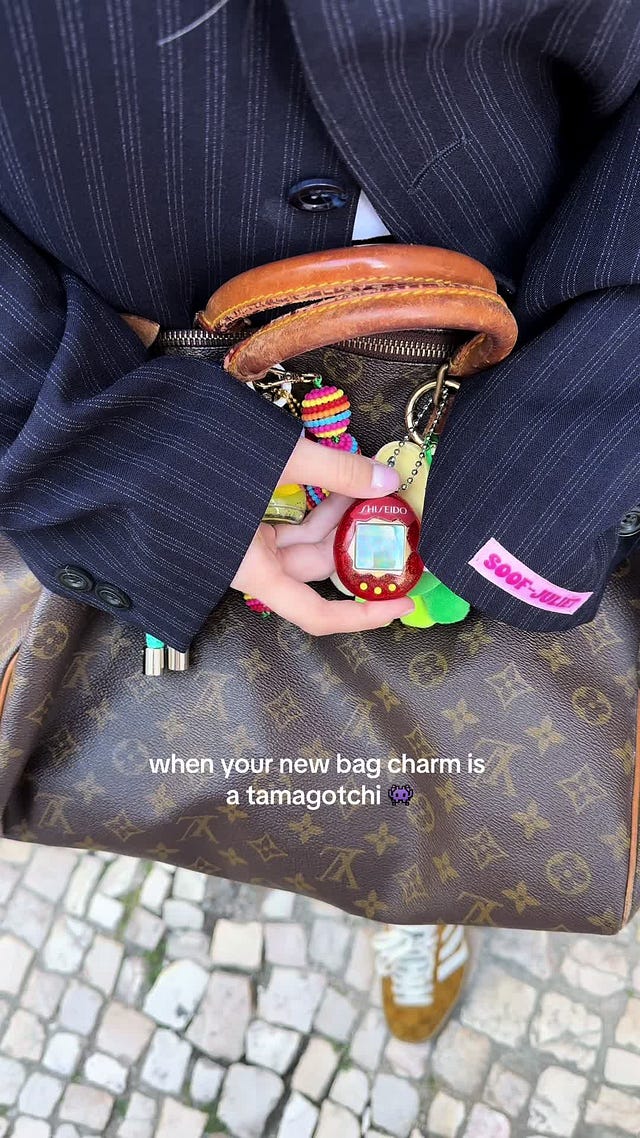
Oh my gosh I love this! I learned so much, i wish i could show you my Tamagotchi's! i love them so much!